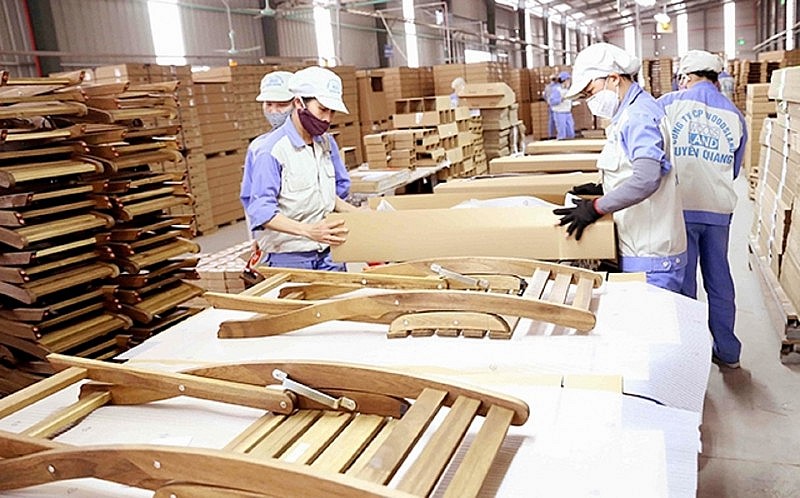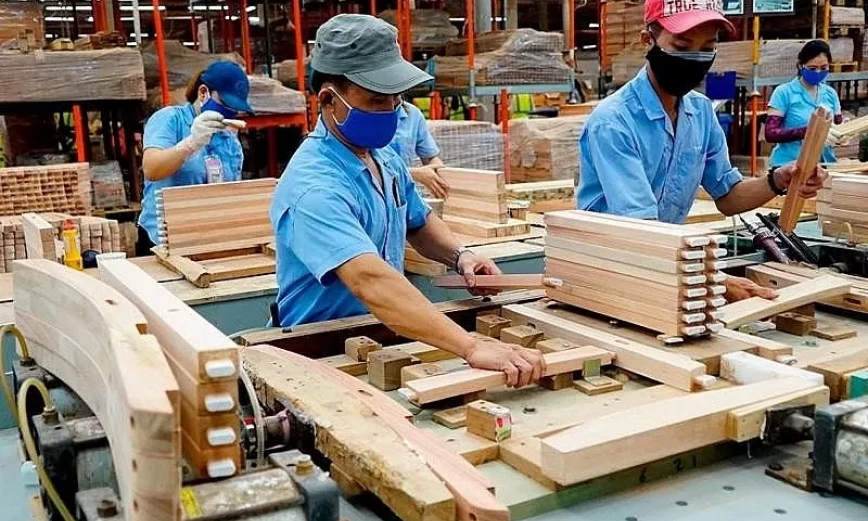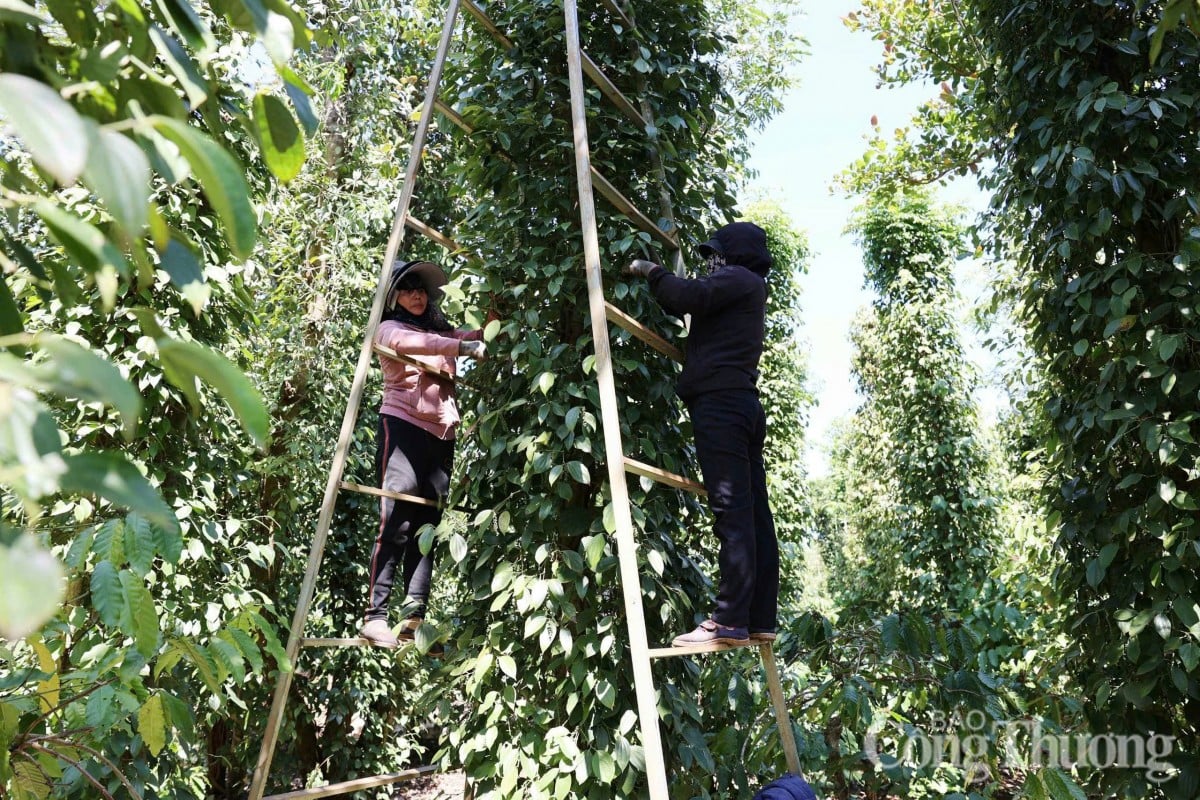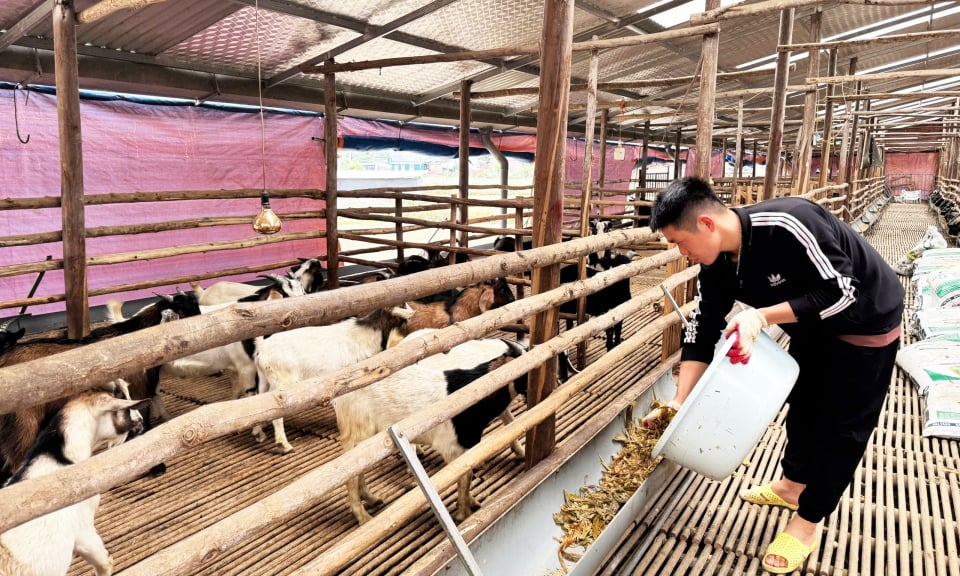The information was given by Mr. Do Xuan Lap - Chairman of the Vietnam Timber and Forest Products Association at the seminar "Sustainable development and challenges for the wood industry" organized by wood industry associations on the afternoon of December 21.
 |
| 2023 is the first year that wood exports do not record growth. |
According to Mr. Do Xuan Lap, 2023 is a challenging year for the Vietnamese wood industry. Consumer demand in major export markets such as the US and EU has decreased sharply, leading to a decrease in orders, forcing many businesses to reduce production scale; some businesses even had to close.
According to the General Department of Customs, export turnover in the first 11 months of 2023 reached 12.1 billion USD, equivalent to 82.5% of the turnover in 2022. If the export momentum remains at the current level, the industry's export turnover in 2023 will reach 13.5 to 14 billion USD, down 15.5% compared to 2022.
According to Mr. Do Xuan Lap, although the market has shown some signs of recovery, according to an expert, 2024 still poses some potential difficulties for the industry. In addition to difficulties in market output, the industry is facing a number of current issues that directly affect the sustainability of the industry.
Firstly, major export markets are increasingly enforcing stricter regulations on product legality and sustainability. Specifically, the EU Deforestation Regulation (EUDR), which will come into effect at the end of June 2023, requires products imported into this market to be legal and not cause deforestation.
Second, there is increasing demand both domestically and in export markets for low carbon emissions across supply chain operations to achieve net zero targets. Products with high carbon content will become more expensive and will lose competitiveness in the market.
Third, each year Vietnam imports about 1.5 - 2 million m3 of round wood and sawn timber from tropical countries, which are legally risky timber, accounting for 30 - 40% of the total imported raw wood of the whole industry. This not only negatively impacts the entire Vietnamese wood industry but also eliminates the opportunity to use low-risk imported wood and especially domestic plantation wood from millions of farming households.
At the seminar, delegates discussed current issues that directly affect the sustainability of the industry. At the same time, they provided information to stakeholders, especially members of associations, on new regulations in the country and export markets on the legality and sustainability of wood products, including regulations on product emissions. They discussed the advantages and disadvantages of stakeholders in the supply chain, including association member enterprises and craft villages, in meeting these regulations.
Mr. To Xuan Phuc - Executive Director of the Forestry Policy, Trade and Finance Program - Forest Trends Organization said, With the EU market, about 77% of total export turnover to the EU are items in the wooden furniture group (HS 9401 and HS 9403), the remaining nearly 23% are items in the wood and semi-raw material group (HS 44). In the first 11 months of 2023, the export turnover of wood and wood products to the EU market decreased by 32% over the same period.
On June 29, 2023, the EU Anti-Deforestation Regulation officially came into effect. The new regulations of this market will have a significant impact on the export turnover of Vietnamese products to this market.
Mr. Nguyen Chanh Phuong - Vice President and General Secretary of the Handicraft and Wood Processing Association of Ho Chi Minh City (HAWA) said that concerns about the new EUDR regulation come not only from exporters but also from customer groups (EU buyers).
“From the perspective of raw material suppliers, countries are currently urgently preparing to meet requirements, such as raw material supply from the US market. Raw material suppliers are very confident in preparing their goods,” said Mr. Nguyen Chanh Phuong.
The specific requirements of the EUDR pose great challenges for Vietnam's wood processing and export industry. Among them, the development of policies and information infrastructure so that producers know where the wood was produced and whether it meets the requirements of the EUDR or not? Proving the origin of wood in Vietnam is difficult, but proving it in the importing country is even more difficult.
Mr. Do Xuan Lap commented that in 2024, the wood industry will still be in a state of many uncertainties, so overall, it is forecasted that the wood industry will grow slowly but not much, about 10 - 12% compared to the last quarters of 2023. The most important solution in 2024 is to create an image of a sustainable development of the Vietnamese wood industry, based on the basic factor of using certified wood and products that reduce emissions.
With the recommendations of experts and businesses in the industry at the seminar, the association will synthesize and recommend to the authorities to develop and propose solutions to better meet the above regulations and expand the market, contributing to the sustainable development of the industry in the future.
Source link






![[Photo] Prime Minister Pham Minh Chinh receives Chairman of Commercial Aircraft Corporation of China (COMAC)](https://vstatic.vietnam.vn/vietnam/resource/IMAGE/2025/4/14/93ca0d1f537f48d3a8b2c9fe3c1e63ea)






















































































Comment (0)